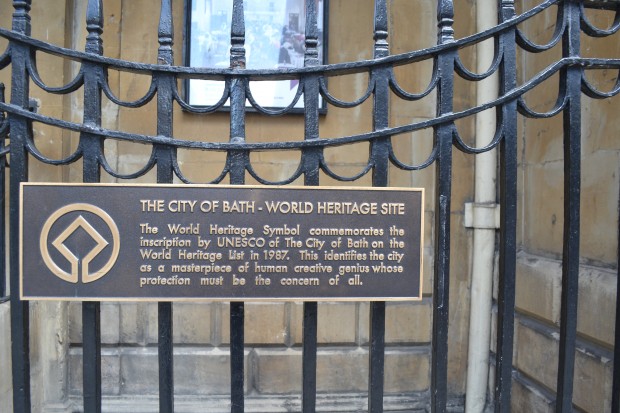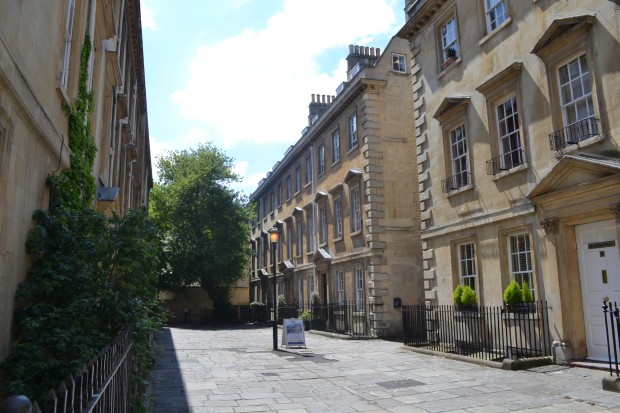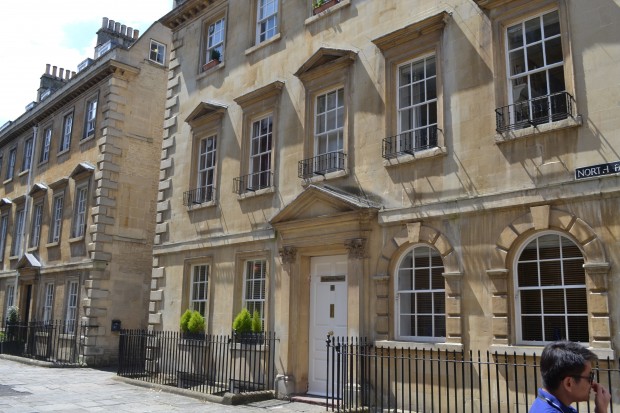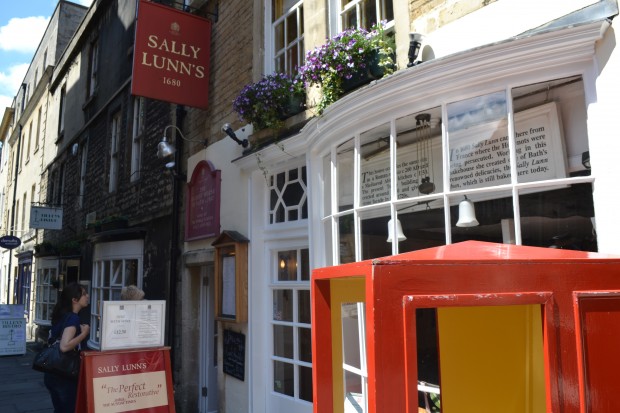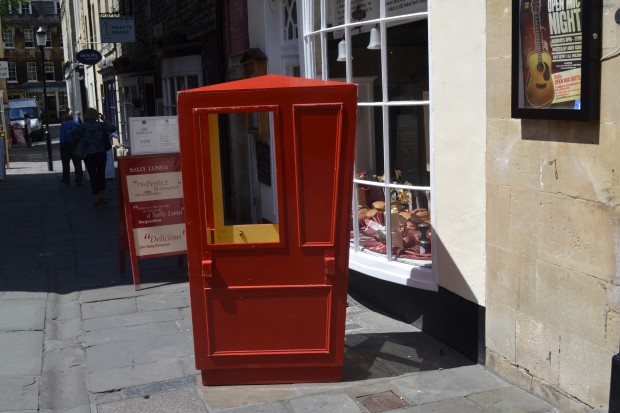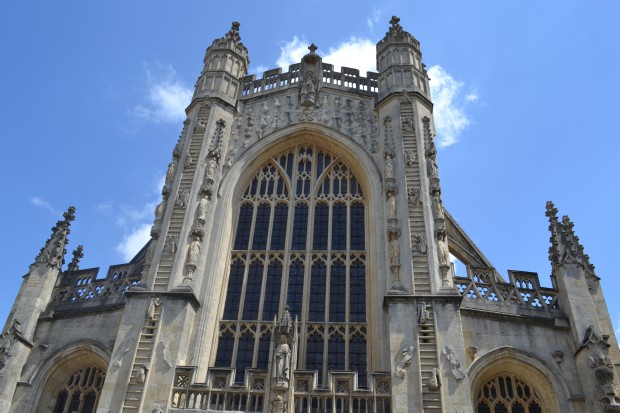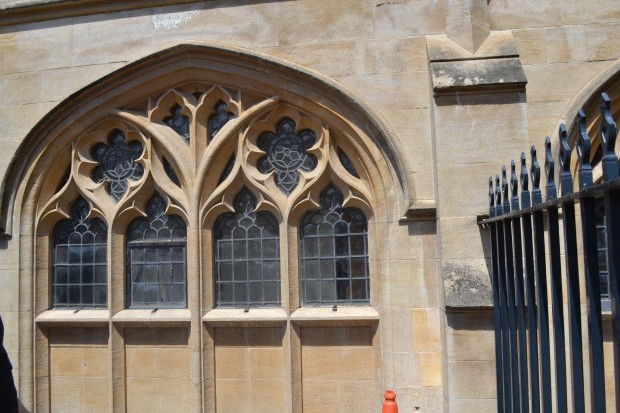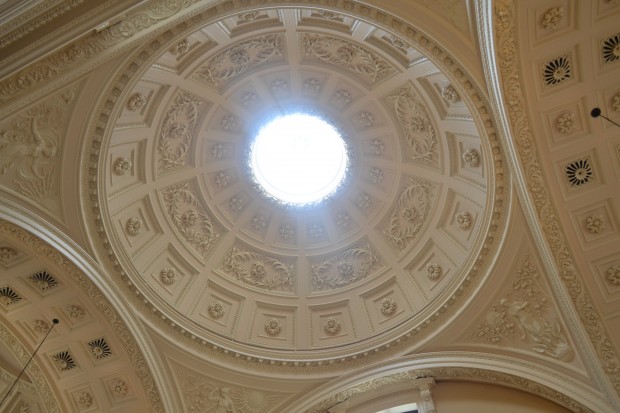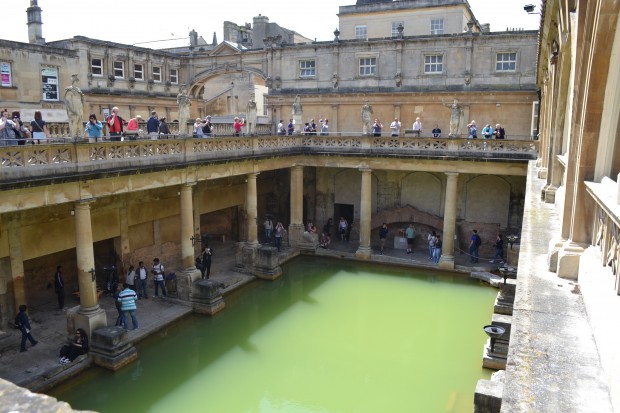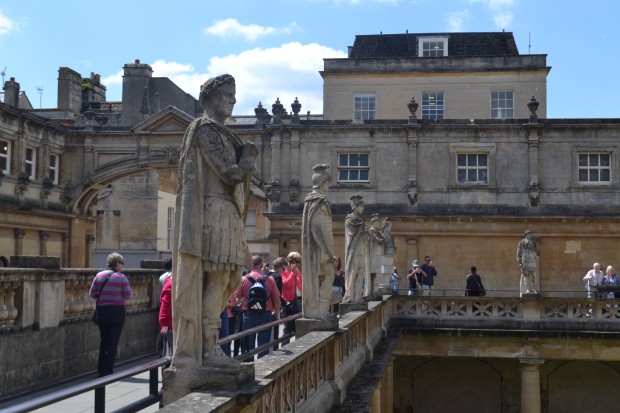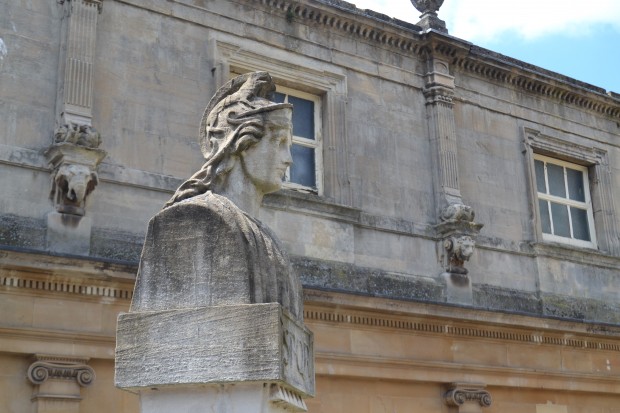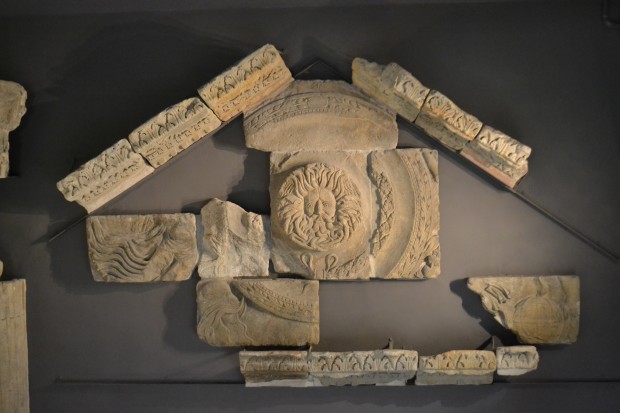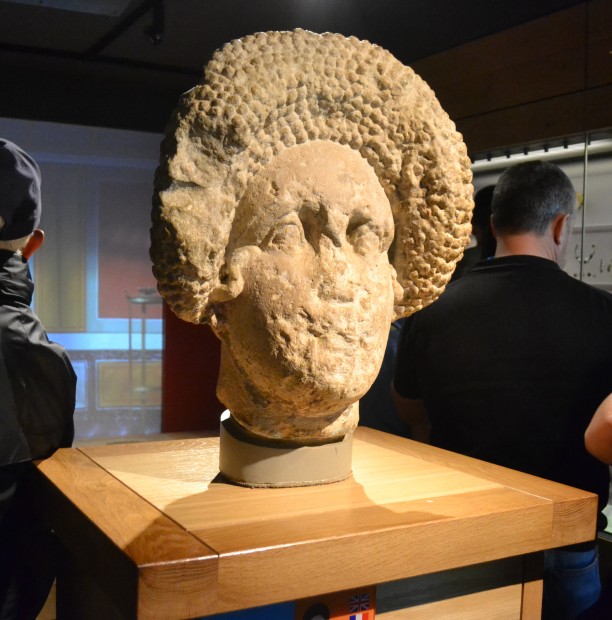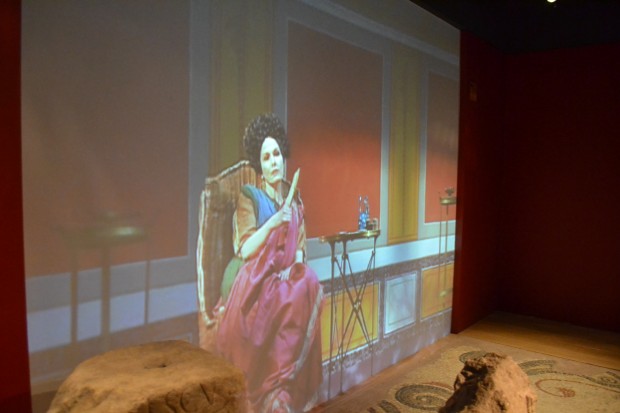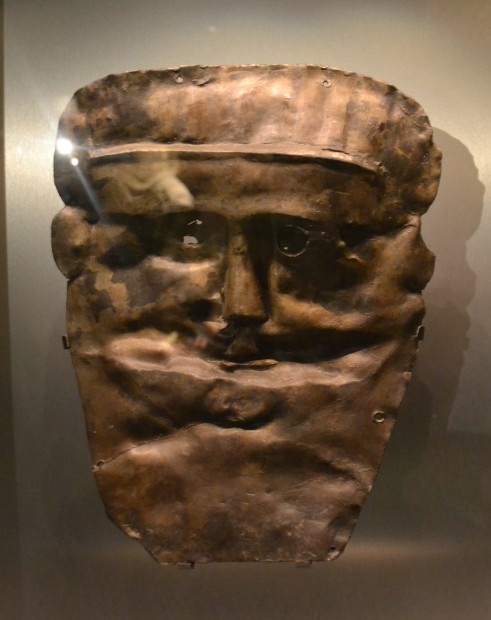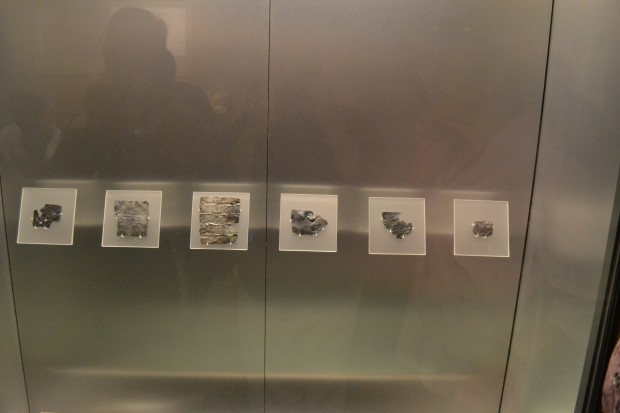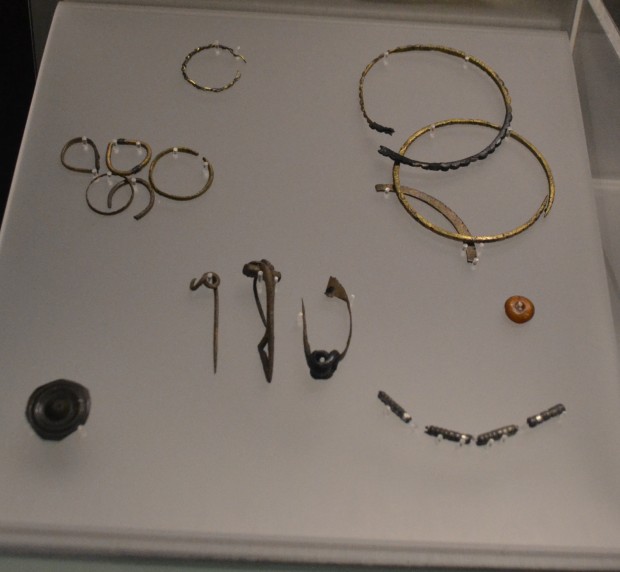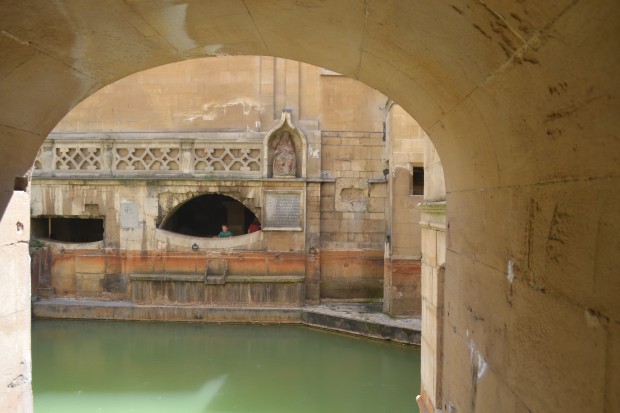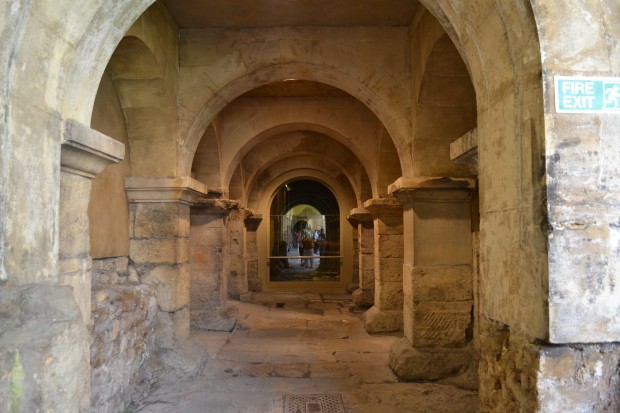
A town is REALLY important when it is a World Heritage Site. The city is “a masterpiece of human genius.” Wow!
It is not just the Roman Baths that have been given the distinction of being a World Heritage Site, it is the entire city with – Georgian architecture, the Bath Abbey, and also the Roman Baths.
Bath is the home of extremely fine examples (Grade 1 buildings) of Georgian (18th century) architecture, and this is one of the reasons Bath was named a World Heritage City.
There are several examples of these homes in the city, but we only saw these. They are made of Bath stone. Can you believe? These homes were built in the 1700’s.
Also in this area was Sally Lunn’s – the famous bakery that makes Sally Lunn Buns. When I go back, I am going to buy a Sally Lunn Bun.
This is a sedan chair. Two poles would be inserted into the brackets on each side of the sedan. At least two gentlemen would carry the lady to her destination. Interesting.
Bath Abbey is the last great Medieval church in England. People have worship at this site for over one thousand years. The present Gothic Abbey was built between 1499 and 1616. This facade shows angels climbing ladders to heaven. Someone said the ladders represented Jacob’s dream, but Abbey online sources say that the ladders represent a dream by Bishop Oliver King. When Bishop King first saw the Abbey, it was in ruins. He didn’t know what to do, but then he had a dream to rebuild the church. Throughout the years care has been taken to restore the Abbey. It is beautiful. The inside of the Abbey is known for its fan vaulted ceiling. Bath Abbey is now an Anglican Parrish Church.
Be still my heart. The Bath stone windows are gorgeous.
We had seen the fantastic Georgian architecture, and the amazing Bath Abbey. Then it was on to the Roman Baths. Yes, Roman Baths from the first century. They are really, really, old.
As we entered the Roman Baths there is a Victorian Grand Hall. The beautiful domed ceiling has decorations of the four seasons.
At first, we entered the upper terrace section overlooking the Great Bath.
The statues on this level are from the late 19th century. The baths were not discovered and explored until the late 1800’s, and these statues were erected for the grand opening of the Roman Baths in 1897.
The Temple at Bath is one of only two truly classical temples known from Roman Britain. It was the place where the cult statue of the goddess Sulis Minerva was housed.
The great ornamental pediment survives, and has been re-erected in the Roman Baths Museum. The pediment carries the image of a fearsome head carved in Bath stone and it is thought to be the Gorgon’s head, which was a powerful symbol of the goddess Sulis Minerva. (From the Roman Baths website.)
This stone head of a lady found in a tomb dates from the first century A.D. I am sure she is wearing the latest hairstyle of her day.
Projected on the walls were pictures that showed life during these early times. Look! She has the same hairstyle.
This was a death mask. (I think I am correct)
Pieces of metal were inscribed with curses and thrown into the Baths.
Jewelry and other artifacts that have been found during excavations were on display. I can relate to losing jewelry in a pool.
This area was on the ground level of the Roman Baths. The water is green from algae, because it is exposed to sunlight. During Roman times, there was a domed roof over the baths, and the water would not have been green.
The Roman plumbing and drainage system is still largely in place and shows the ingenuity of the Roman engineers.
Lead pipes were used to carry hot spa water around the site using gravity flow.
The Spring overflow is where surplus water from the Spring, not used in the baths, flows out to a Roman drain.
The Roman great drain carries all the spa water from the site to the River Avon four hundred meters away. (From the Roman Baths website) Click HERE to read more.
It is hard to believe that the Roman Baths have survived all these years. We were warned to be careful as we walked along “because the floors are old and there are pot holes”. Are you surprised?
Bath was an interesting city, and again I do not feel we had enough time to explore as we would have liked. (Another reason to return to England.)
Blessings to you and yours,
Throughout England there are many beautiful ancient church buildings where people have worshiped for hundreds of years. I hear that many people in England no longer worship, and America is generally 20 years behind England. What a scary thought. It is sad that many are rejecting their Christian heritage. The houses of worship we visited appear to be actively striving to testify to Christ. I am going to pray for revival in England as well as revival in the United States of America.

